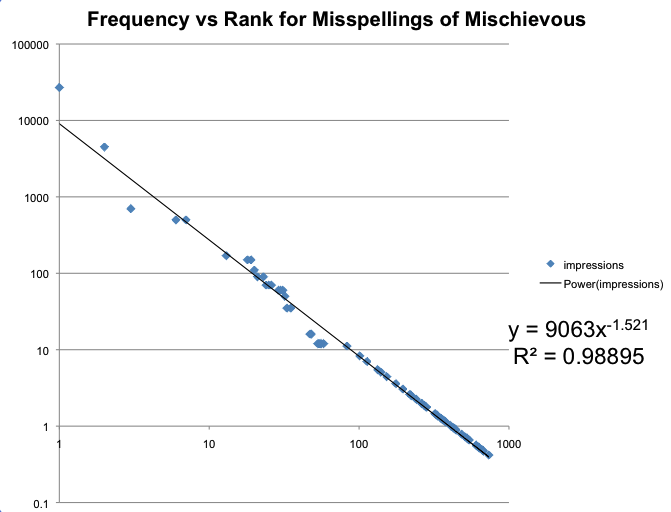 It’s become quite popular to give advice in a blog post. Hopefully, you can provide great words of wisdom to help others. However, I’ve noticed that some of these posts have an underlying agenda. First, I’ve seen some meaningless posts used to get “street cred” and attention even though they really don’t say anything interesting. Second, I’ve seen posts whose specific goal is to reshape a “problematic history” in positive light.
It’s become quite popular to give advice in a blog post. Hopefully, you can provide great words of wisdom to help others. However, I’ve noticed that some of these posts have an underlying agenda. First, I’ve seen some meaningless posts used to get “street cred” and attention even though they really don’t say anything interesting. Second, I’ve seen posts whose specific goal is to reshape a “problematic history” in positive light.
Regardless of the reality, one can create a plausible story of the past in a blog. You can neutralize your bad decisions, morally suspect actions, and failures. The trick is to do so in way it looks like you are giving advice to entrepreneurs. As long what you are saying sounds reasonable, you’ll get credit for brilliance. This may sound incredulous — after all, won’t there be people in the peanut gallery that disagree? Yes, always. Fortunately, those that disagree will usually be polite, unless you are a complete dick in your post. More importantly, there will always be people who support your position (unless you are completely off the deep end). Trust me. Further, hopefully you have friends that will support you. Even if you don’t have friends, there will probably be those who will want to ride your coattails and give positive support. There will be enough lemmings willing to jump on board. (Apologies for mixed metaphors.) In the end, you can use your blog for self promotion and covering up deeds in the past without providing any value to your readers. How does this work?
It Doesn’t Matter What You Say
Lorem ipsum dolor sit amet, mi cursus mi libero sollicitudin, aliquet posuere in, et quis eleifend consectetuer id nulla, sit luctus. A porttitor egestas nunc, vestibulum a, congue dui, ac dui proin. Vel ligula et, donec ullamcorper nec aliquam habitant quis. Tempor metus ornare ullamcorper nec mauris, pellentesque molestie aliquam, elit adipiscing et sodales enim, sed ante, ut pretium a justo egestas lorem quam. Risus justo proinsed quis cursus, luctus posuere quis, enim ligula orci vehicula venenatis, lacus lorem eget hac et cras. Ullamcorper risus ante, cursus velit ut ut n ulla volutpat, nullam euismod at fringilla varius tinciduntac, quam lectus aliquet sociosqu vitae nam, quis nec pulvinar quisque. Sed rhoncus mauris, mollis suspendisse eros faucibus erat nec consectetuer.
Use Social Proof
Hopefully, you have some friends in your corner. Or at least people that want to get something from you and your blog post. Get your friends to tweet out and facebook your post. If you have a damaged reputation or just want to increase the credibility of your post, get someone to co-author the post with you. It should be someone you have at least some connection to. It makes you look better. It provides social proof. Also, generously and gratuitously sprinkle in hyperlinks. While authority comes from inbound links coming to your post, it’s easy to fool readers with the opposite. Use outbound links to good posts.
Incredibly, even if you don’t have any friends or people that want to co-author with you, don’t worry. You can just pretend you have a co-author. In this post, I didn’t ask Wayne to write or edit any part of this post. However, I’ll just pretend he did. I didn’t even ask for his permission. No one will know. Hopefully, he’ll even be pleased, since he gets “social proof” by being a co-author. (Though, if your “co-author” does complain, you might have some ‘splaining to do.) Did you know I am co-authoring a blog post with Barack Obama next week?
Format Matters
 Even though what you say really doesn’t matter, how you say it does. From a semantic perspective, you should say something wise, funny, and seemingly authoritative. You should take the perspective that you are a seasoned veteran that has been “around the block” with battle wounds to show for it. Snarky and ironic can work, but be careful.
Even though what you say really doesn’t matter, how you say it does. From a semantic perspective, you should say something wise, funny, and seemingly authoritative. You should take the perspective that you are a seasoned veteran that has been “around the block” with battle wounds to show for it. Snarky and ironic can work, but be careful.
More important, the format of your post matters. It should be of medium length. Clearly, it should be longer than a tweet. If anyone comments, tl;dr — you know you’ve written too much. Here are some key elements:
- A catchy headline
- A picture of you — a d-baggy one where you are wearing sunglasses is best
- A picture of your co-author
- A short bio of both you and and your co-author
- A bullet list that summarizes seemingly important points — make it easy for your readers to digest something
Distribution
Readers are important, of course. Tweet your post out early and often. Post up on Facebook. The best time is probably Tuesday or Thursday morning, never Monday. Choose to post on a site that values permanently keeping your post online. I’ve seen sites that move guest posts behind a reg gate after a few weeks. Silly, silly, silly. Your post should be the gift that keeps giving.
Last, and I shouldn’t need to explain this — make sure you do your SEO work.
Conclusion
See? It doesn’t matter what you say. Even though I’ve “let the cat is out of the bag,” this technique will continue to be exploited, hopefully for the benefit of all. In particular, if your past is troubled, no worries — fix it up with a good blog. Good luck!
(About the authors: Wayne Yamamoto is the co-founder and CEO of Charity Blossom and co-founder of MerchantCircle. Follow him on Twitter at @kazabyte. Jason Culverhouse co-founded Charity Blossom with Wayne and worked with him at MerchantCircle and BroadVision. He can be found @jsonculverhouse on Twitter and blogs at mischievous.org.





